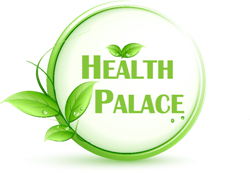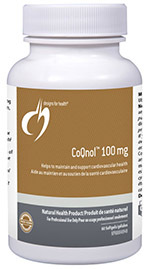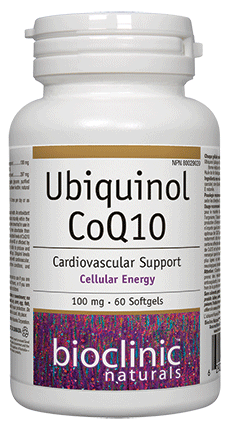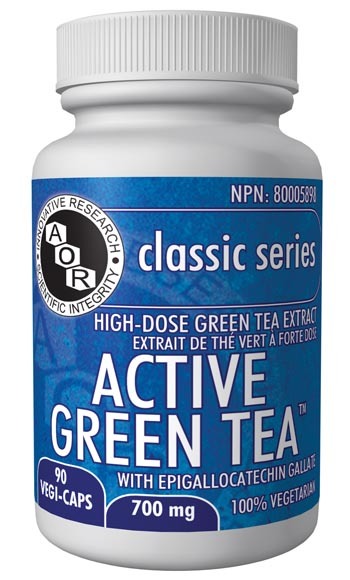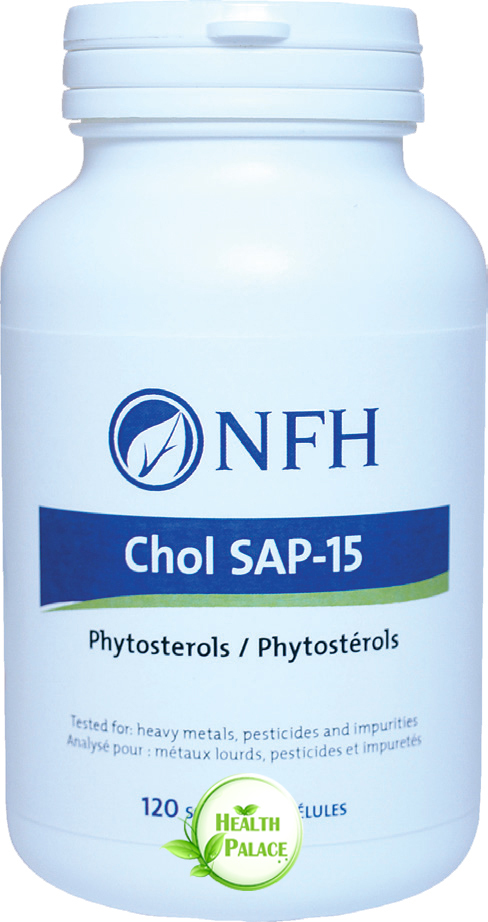15 Ways to Keep Your Heart Healthy | How to Lower Your Cholesterol Levels Naturally?

How to Maintain and Restore Healthy Blood Lipids Level
Cardiovascular disease is referred to a group of health conditions involving body's circulatory system including heart, arteries, and veins. There are different mechanisms by which a cardiovascular condition could form. For example the atherosclerosis is a mechanism through which the coronary artery disease and stroke are developing. There are several causes initiating atherosclerosis including; high blood pressure, high blood lipids, diabetes, high toxic load such as smoking and alcohol, being overweight and so on.
Since high blood lipid levels remains one of the of the major concerns in regards to cardiovascular disease, managing and maintaining proper blood lipids will help to eliminate one of the contributing pillars to the atherosclerosis and cardiovascular disease.

How lipids are moving around in our body?
Cholesterol and triglyceride molecules are transported by specialized proteins called Lipoproteins throughout the blood; and in fact the size and density of lipoproteins are the risk indicators of cardiovascular disease.
Lipoproteins are also responsible to transport fat soluble vitamins and antioxidants such as beta carotenes, vitamin E and Co Q10. The structure of these lipoproteins contains protein molecules called Apo-proteins. Apo-proteins act as signaling factors guiding the lipoproteins through blood stream to get to the tissues where they have to transport the lipids to.
Lipoproteins are categorized based on their function, size, density, and structure:
Chylomicrons: are produced by the intestinal cells to transport the lipid molecules absorbed from food to the liver, fat cells, and muscles.
VLDLs: take the triglycerides, cholesterol and phospholipids from liver and transport them to the fat cells to be stored.
LDLs: transport the cholesterol from the liver to the other tissues where needed. LDLs contain 60 to 70% of circulating cholesterol in our body. The signaling protein of LDL is called ApoB-100 which is recognized and picked up by those cell requiring cholesterol.
Because higher amount of cholesterol is carried by LDL, LDL is known as bad cholesterol. However all the LDLs are not equal and the LDL's amount of the total cholesterol alone is not making it a risk factor. Smaller and denser LDL molecules pose a significantly higher risk to the cardiovascular system.
Smaller and denser LDL Molecules are more prone to oxidation and much easier can penetrate under the inner lining of arteries. Therefore, besides LDL numbers, analysis of the size and density of the blood LDLs provide higher value and accuracy in preventing and risk assessment of cardiovascular disease.
HDLs: take the cholesterol from tissues, cells, and other carries like VLDLs and Chylomicrons and bring them to the liver to be re-processed, used in hormone production, vitamin production, or disposed as bile salts.
HDLs form 20 to 30% of the blood cholesterol. Cholesterol carried in form of the HDL is known as good Cholesterol because of its protecting benefits. The signalling molecules of the HDL are including ApoA-I & ApoA-II.
Transportation of cholesterol from tissues to the liver is called reverse cholesterol transport . Optimum liver function and hormone health improves reverse cholesterol transport.
What are the functions of cholesterol and triglycerides?
As it is apparent liver plays a key role in storing, metabolizing and distributing energy form different sources including lipids, glucose, and protein around the body.
Cholesterol is a wax like steroid molecule which plays multiple important roles in our body. Cholesterol molecules are found in our cells' membranes and its concentration varies depending on the function of that cell. For example, more cholesterol is found in the cell wall of the nerve cells. Cholesterol is also critical in metabolism of steroid hormones, and Vitamin D. Cholesterol is necessary for formation of bile saltswhich further help with digesting lipids.
Triglyceride molecules provide long term storage of energy in the form of fat. While our body is limited to store sugar in the form of glycogen in muscles and liver, it has much greater capacity to store higher amount of energy in the fat form. Simply our liver turns the excess sugar from our diet to fat for storage.

How cholesterol and triglycerides have become risk factors?
Initially due to finding of lipid deposits in the affected areas of arteries in cases with atherosclerosis, high blood lipid levels were linked to cardiovascular disease. Later on studies found that particularly the oxidized LDL (Ox-LDL) is able to pass beneath the inner layer of arteries and initiate inflammation, scaring, trapping more fat and eventually forming a plaque.
Fatty acid parts of the LDLs get oxidized as exposed to free radicals and toxins in the blood, and that changes the structure and eventually the function of the LDL. Oxidized LDL is able to damage the Inner layer of arteries and get beneath this layer, consequently the immune system will be triggered and white blood cells are called to remove these oxidized LDLs. This process often causes inflammation and creates bigger molecular structures trapped under the endothelium narrowing the artery and forming plaque.
High blood glucose or high sugar diet as well increases the damaging effects of LDL to the arteries. Through a process called Glycation, the fatty acids in LDL join to Glucose and that not only will change structure and function of the LDL, but also do accelerate the LDL's oxidation.
Therefore, elevated LDL alone does not cause cardiovascular disease. High LDL increases the likely hood of more of them being oxidized and that impose a serious risk to our arteries.
How to reduce the side effects of bad cholesterol and triglycerides?
Prevention of cardiovascular disease should start from our diets. Research recommend series of therapeutic lifestyle changes to manage blood lipid levels.
- Diet low in saturated and hydrogenated fats while rich and high in Omega 3 fatty acids and plant sterols.
- Diet low in sugar and simple carbohydrates, instead to include complex carbs, vegetables, and minimum daily amount of 30 grams fibre.
- Diet to include 15% of daily calorie from lean protein.
- Diet with Low sodium.
As cholesterol is a pre-cursor to production of variety of steroid hormones, optimizing hormonal level will improve the reverse cholesterol transport resulting in lower LDL and better HDL function.
Several nutrients via different mode of action promote a healthy blood lipid levels and provide protection against cardiovascular disease:
Pantethine (biological active form of vitamin B5) acts as a co-factor in fatty acid metabolism promoting energy production from fatty acids in cells. Studies show both cholesterol and triglyceride lowering effaces of Panthetine in patients with high blood lipid profile and high blood sugar.
Garlic extract has been supported by many human studies for its cholesterol and triglycerides lowering benefits. Garlic extract also helps to reduce both Systolic and diastolic blood pressure. Human trial showed up to 4.5 mmHg reduction in systolic blood pressure compared to placebo group and this reduction was greater (about 8.5 mmHg) in those with hypersensitivity.
Amla is an Ayurvedic medicine which has been researched for its cardiovascular benefits. Research show that Amla provides great antioxidant activity and is able to lower the Ox-LDL and improve overall lipid profile by reducing LDL, total cholesterol and triglycerides, while increasing HDL. Additionally it is suggested that Amla improves blood sugar levels and consequently could protect against Glycation.
Plant sterols (phytosterols) are steroid molecules of plants acting similar to cholesterol in human and other animals. Phytosterols are hardly get absorbed in our digestive system and by competing with the absorption of other fats, they help to lower the lipids absorption in digestive tract. Multiple human studies indicate that supplementing with 2 to 3 grams of plant sterols daily will more effectively reduce blood lipids when combined with lifestyle and diet improvement.

Based on numerous human trials daily therapeutic dosage of antioxidants including Co Q10, Vitamin E, Vitamin C, Pomegranate extract, Carotenoids like Lycopene, and Phytophenols such as Flavonoides from green tea, Resveratrol from grapes, Anthocianidines from grapes and berries, can prevent and reverse the LDL oxidation, and improve overall cellular function and energy.
Omega3 fatty acids including EPA and DHA are not synthesized in human, but they are essential to the health due to their participation in multiple metabolic functions in the body. Omega 3 should be sourced though diet. It's been found that daily therapeutic dosage of 3-4 grams of high grade EPA and DHA can slow down the release of the VLDL and increase degeneration of blood triglycerides, therefore able to reduce triglyceride levels significantly. Lowering triglycerides also reduces the LDL levels and improves HDL.
Maintaining a healthy liver improves the lipid profile and cardiovascular health. Artichoke extract has been found to provide liver protecting and bile flow stimulating properties. Studies on human found supplementing 1.2 to 1.8 grams of artichoke extract within 6 to 12 weeks has lowered the LDL and total cholesterol about 6-10% and improved overall liver health.
Optimal Intestinal health by maintaining a balanced and healthy micro-flora population also play an important role in managing healthy blood lipids. Intestinal probiotics play a role in controlling and regulating cholesterol metabolism and transport. One bacteria in particular called Lactobacillus reuteri has been studied for its cholesterol lowering benefits. A randomized human study suggests supplementing with 3 billion cfu L.reuteri during 6 weeks decreased blood total cholesterol, LDL, APOB100, and inflammatory markers like CRP.
Cardiovascular disease is a chronic condition which is usually resulted from multiple factors. It is very important to be pro active and reduce the impact of the contributing risk factors by being aware of and eliminating them through adopting a healthy lifestyle habits, healthy foods, and nutritional supplements. Also it is shown maximum recovery from cardiovascular disease and restoring health is achieved via a holistic approach and by addressing all the contributing factors.
Articles and products featured by Health Palace are collected from a variety of sources and are provided as a service by Health Palace. These newsletters, while of potential interest to readers, do not necessarily represent the opinions nor constitute the advice of Health Palace. Presented materials are only for information purposes and do not intent to treat, cure, or prevent any disease.
References:
- Nelson D, Cox M. Principles of biochemistry. 4th ed. W.H. Freeman & Co.; 2005.
- Lu M, Lu Q, Zhang Y, Tian G. ApoB/apoA1 is an effective predictor of coronary heart disease risk in overweight and obesity. Journal of biomedical research. 2011;25(4):266-273.
- Antonopoulos S. Third Report of the National Cholesterol Education Program (NCEP) Expert Panel on Detection, Evaluation, and Treatment of High Blood Cholesterol in Adults (Adult Treatment Panel III) Final Report. Circulation 2002;106:3145-3408.
- Chait A et al. Susceptibility of small, dense, low-density lipoproteins to oxidative modification in subjects with the atherogenic lipoprotein phenotype, pattern B. Am J Med. 1993 Apr;94(4):350-6.
- Koba S et al. Small LDL-cholesterol is superior to LDL-cholesterol for determining severe coronary atherosclerosis. J Atheroscler Thromb. 2008 Oct;15(5):250-60.
- Steinberg D. Thematic review series: The Pathogenesis of Atherosclerosis. An interpretive history of the cholesterol controversy: part I. The Journal of Lipid Research 2004 Apr.;45(9):1583-1593.
- Steinberg D. The LDL modification hypothesis of atherogenesis: an update. The Journal of Lipid Research 2008 Dec.;50(Supplement):S376-S381.
- Sobal G et al. Why is glycated LDL more sensitive to oxidation than native LDL? A comparative study. Prostaglandins Leukot Essent Fatty Acids. 2000 Oct;63(4):177-86.
- Turhan S, Tulunay C, Gulec S, et al. The association between androgen levels and premature coronary artery disease in men. Coron Artery Dis. 2007 May;18(3):159-62.
- Reaven P, Witztim J. Oxidized Low Density Lipoproteins in Atherogenesis: Role of Dietary Modification. Annual Reviews in Nutrition 1996 Feb.;16:51-70.
- Toma L et al. Irreversibly glycated LDL induce oxidative and inflammatory state in human endothelial cells; added effect of high glucose. Biochem Biophys Res Commun. 2009 Dec 18;390(3):877-82.
- Dong Y et al. Activation of protease calpain by oxidized and glycated LDL increases the degradation of endothelial nitric oxide synthase. J Cell Mol Med. 2009 Sep;13(9A):2899-910.
- Windler E et al. Hormone replacement therapy and risk for coronary heart disease. Data from the CORA-study--a case-control study on women with incident coronary heart disease. Maturitas. 2007 Jul 20;57(3):239-46.
- Bertolini S, Donati C, Elicio N, Daga A, Cuzzolaro S, Marcenaro A, Saturnino M, Balestreri R. Lipoprotein changes induced by pantethine in hyperlipoproteinemic patients: adults and children. Int J Clin Pharmacol Ther Toxicol 1986 Nov;24(11):630-7
- Tonutti L, Taboga C, Noacco C. Comparison of the efficacy of pantethine, acipimox, and bezafibrate on plasma lipids and index of cardiovascular risk in diabetics with dyslipidemia. Minerva Med 1991 Oct;82(10):657-63
- Reinhart KM, Talati R, White CM, Coleman CI. The impact of garlic on lipid parameters: a systematic review and meta-analysis. Nutr Res Rev 2009 Jun.;22(1):39-48.
- Khoo YSK, Aziz Z. Garlic supplementation and serum cholesterol: a meta-analysis. J Clin Pharm Ther 2009 Apr.;34(2):133-145.
- Ried K, Frank OR, Stocks NP, Fakler P, Sullivan T. Effect of garlic on blood pressure: a systematic review and meta-analysis. BMC Cardiovasc Disord 2008;8:13.
- Kim HJ et al. Influence of amla (Emblica officinalis Gaertn.) on hypercholesterolemia and lipid peroxidation in cholesterol-fed rats. J Nutr Sci Vitaminol (Tokyo). 2005 Dec;51(6):413-8.
- Nampoothiri SV et al. In vitro antioxidant and inhibitory potential of Terminalia bellerica and Emblica officinalis fruits against LDL oxidation and key enzymes linked to type 2 diabetes. Food Chem Toxicol. 2011 Jan;49(1):125-31.
- Akhtar MS et al. Effect of Amla fruit (Emblica officinalis Gaertn.) on blood glucose and lipid profile of normal subjects and type 2 diabetic patients. Int J Food Sci Nutr. 2011 Apr 18.
- Brown L, Rosner B, Willett WW, Sacks FM. Cholesterol-lowering effects of dietary fiber: a meta-analysis. Am J Clin Nutr 1999 Jan.;69(1):30-42.
- Weingartner O, Bohm M, Laufs U. Controversial role of plant sterol esters in the management of hypercholesterolaemia. European Heart Journal 2008 Sep.;30(4):404-409.
- Calpe-Berdiel L. New insights into the molecular actions of plant sterols and stanols in cholesterol metabolism. Atherosclerosis 2009;
- Cenedella RJ et al. Concentration and distribution of ubiquinone (coenzyme Q), the endogenous lipid antioxidant, in the rat lens: effect of treatment with simvastatin. Mol Vis. 2005 Aug 10;11:594-602.
- Karppi J, Nurmi T, Kurl S, Rissanen TH, Nyyssönen K. Lycopene, lutein and beta-carotene as determinants of LDL conjugated dienes in serum. Atherosclerosis 2010 Apr.;209(2):565-572.
- Badiou S et al. Vitamin E supplementation increases LDL resistance to ex vivo oxidation in hemodialysis patients. Int J Vitam Nutr Res. 2003 Jul;73(4):290-6.
- Fuhrman V et al. Pomegranate juice inhibits oxidized LDL uptake and cholesterol biosynthesis in macrophages. J Nutr Biochem. 2005 Sep;16(9):570-6.
- Hooper L, Kroon PA, Rimm EB, et al. Flavonoids, flavonoid-rich foods, and cardiovascular risk: a meta-analysis of randomized controlled trials. American Journal of Clinical Nutrition 2008 Jul.;88(1):38-50.
- Urpí-Sardà M, Jáuregui O, Lamuela-Raventós RM, et al. Uptake of diet resveratrol into the human low-density lipoprotein. Identification and quantification of resveratrol metabolites by liquid chromatography coupled with tandem mass spectrometry. Anal. Chem. 2005 May;77(10):3149-3155.
- Wider B, Pittler MH, Thompson-Coon J, Ernst E. Artichoke leaf extract for treating hypercholesterolaemia. Cochrane Database Syst Rev 2009;(4):CD003335.
- Bundy R, Walker AF, Middleton RW, Wallis C, Simpson HCR. Artichoke leaf extract (Cynara scolymus) reduces plasma cholesterol in otherwise healthy hypercholesterolemic adults: a randomized, double blind placebo controlled trial. Phytomedicine 2008 Sep.;15(9):668-675.
- Marik PE, Varon J. Omega-3 dietary supplements and the risk of cardiovascular events: a systematic review. Clin Cardiol 2009 Jul.;32(7):365-372.
- McGowan MP, Proulx S. Nutritional supplements and serum lipids: does anything work? Curr Atheroscler Rep 2009 Nov.;11(6):470-476.
- DiRienzo DB. Effect of probiotics on biomarkers of cardiovascular disease: implications for heart-healthy diets. Nutrition reviews. Jan 2014;72(1):18-29.
- Jones ML, Martoni CJ, Parent M, Prakash S. Cholesterol-lowering efficacy of a microencapsulated bile salt hydrolase-active Lactobacillus reuteri NCIMB 30242 yoghurt formulation in hypercholesterolaemic adults. The British journal of nutrition. May 2012;107(10):1505-1513.
- Lichtenstein AH. Summary of American Heart Association Diet and Lifestyle Recommendations Revision 2006. Arteriosclerosis, Thrombosis, and Vascular Biology 2006 Oct.;26(10):2186-2191.
| Designs for Health OmegAvail Liquid 8 Oz |
Designs for Health CoQnol 100 mg 60 Softgels |
Bioclinic Naturals Ubiquinol CoQ10 - 100 mg 60 Softgels |
|||||||
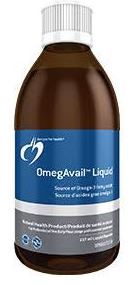 OmegAvail™ Liquid is a viable option for patients who prefer to swallow fewer capsules and for those requiring high doses. ...Read more |
CoQnol is a non-GMO form of ubiquinol, which is the reduced, antioxidant form of CoQ10. Both ubiquinone and ubiquinol are critical to the cellular ATP (energy) production cycle...Read more |
|
|||||||
|
|
|
|
|
|
|||||
|
|
|
|
|||||||
AOR Active Green Tea 180 Veg Capsules |
NFH Chol SAP 15 - 120 Softgels |
St Francis Hepato DR 90 Veg Capsules |
|
||||||
|
|
Phytosterols are plant analogs of cholesterol which lower blood cholesterol levels, thus reducing the risk of cardiovascular disease (CVD). Evidence shows that LDL-cholesterol and total cholesterol concentrations can be decreased between...Read more |
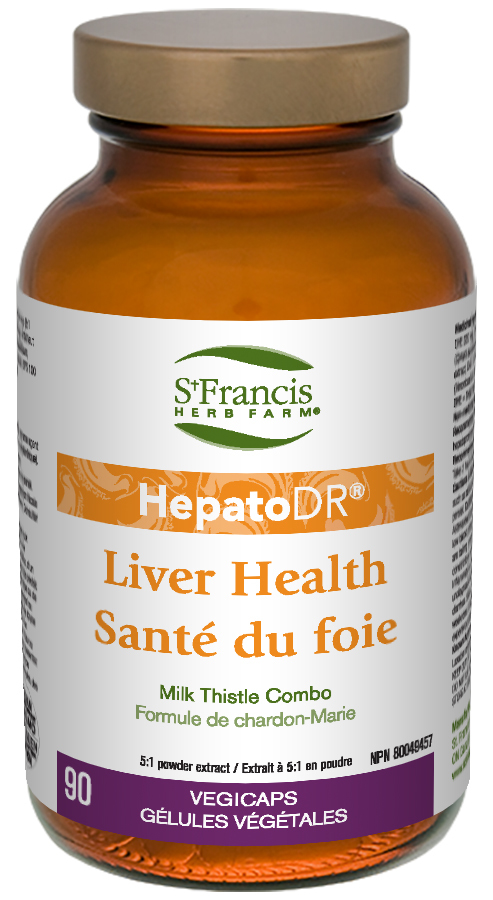 Traditionally used in Herbal Medicine to support liver function and as an alterative to help remove accumulated waste products via the kidneys, skin, and mucous membranes... Traditionally used in Herbal Medicine to support liver function and as an alterative to help remove accumulated waste products via the kidneys, skin, and mucous membranes...
|
|||||||
|
|
|
Recent Posts
-
Macular degeneration
Macular degeneration which is commonly known as age-related macular degeneration (AMD /ARMD), is a m …7th Sep 2025 -
Maintain A Healthy Heart Rhythm With Integrative Medicine
Maintain A Healthy Heart Rhythm With Integrative Medicine;Usually, abnormal heart rate or arrhythmi …4th Feb 2021 -
How to Prevent Gallstones from Forming? | Natural Supplements for Gallstones
How To Prevent Gallstone Formation?Gallstones are hard deposits made of cholesterol or bilirubin f …4th Mar 2020
